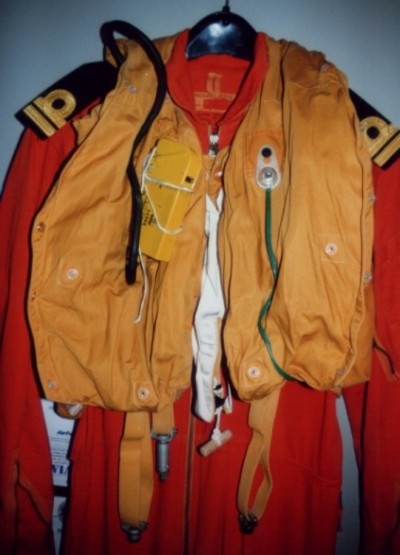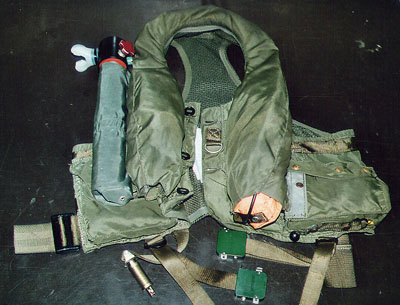|

The former Royal Netherlands
Navy (MLD, now Maritime Helicopter Group) operates a number of Westland SH-14D Lynx helicopters and
used to fly the Lockheed P-3C Orion. In the near future, the Lynx will be replaced by the NH-90 helicopter. Main tasks are the Anti Submarine Warfare,
Search and Rescue, Drug Enforcement and the support of Marines in
assault. The helicopters are operated from Naval Air Station De Kooy
and the Orions flew from the now closed NAS Valkenburg, both located on the western
coast of the Netherlands.
Past
After World
War II, the Netherlands carried out numerous operations in the West
Indies. Flying Catalina's and Dornier Do-24 flying boats. In the
early days the old wartime flying gear was used. Carrier operations
started in 1946 from the "Karel Doorman". The Royal Netherlands Navy
operated Sea Furies, Sikorsky S-55. Grumman Avenger and the Lockheed
Harpoon. The flying gear in those days came from the United Kingdom,
who also supplied the aircraft carrier. One of the most widely used
helmets was the Mk.1 with blue cloth helmet and H type mask. One of the other helmets was the gold coloured H-3. Both of the helmets had orange and white tape stripes. The
mask was used for communication only and had no oxygen hose. A
goggle set was also used on the helmet. The life preserver was the
orange coloured Mae West but this was to be replaced by a RAF type
vest. This vest was the Mk.4 made by "Frankenstein and Sons" from Manchester
and. On the vest were a SARBE emergency radio, a
dye marker and a light. Some small items were carried in the pockets
like a signalling mirror and a whistle. After introduction of the
S-2A Tracker, the flying gear changed to American style clothing.
One of the things changing first was the helmet. Although a headset
was mostly used, the USN style SPH-1 helmet came in fashion, taped
with reflective stripes of white and orange. An orange flight suit
was worn; the crews named this suit the "Carrot suit". The flight
jacket in use was a grey leather one with orange liner. This was the
same kind of jacket as in use with the German Luftwaffe. Helicopter crew
operating with the Westland Wasp and Agusta Bell AB-212, used the
same gear until the first dedicated helicopter helmet. This was to
be the SPH-3B. This Gentex product had a throat mike for noise
reduction and was taped as
well.
   
Examples of helmets
used by the Dutch Navy. From left to right they are SPH-1, APH-6C, HGU-47P,
and
Alpha 100.
All pictures are thumbnails.
Present
The last couple of years,
the Marine Luchtvaart Dienst, (Naval Aviation Department) is
changing their gear. As with most air arms, toned down and
camouflage is the key word.

The Helmet
The
helicopter crews replaced their Gentex SPH-3B,with the Helmet Ltd
Alpha series; a reflective taped white one for normal operations (Alpha 100) and a
green/black version for special operations, the Alpha 200 (see the seperate article on flightgear online). The Orion crews
replaced during their last years, the APH-6DL helmets with the HGU-47/P (V4)
with PRK-37/P shell, EEK-4A/P single visor, PRK-40 liner assembly,
and boom microphone. The APH-6DL came in three versions, one with the Sierra one piece dual
visor rams horn type, one with the PRU-36/P dual visor and one with
the 3 piece dual visor rams horn. The HGU-47/P came with a David Clark boom microphone and was only used as a crash helmet in case of an emergency. After the Orion operations, the helmets went on to be used on the Fokker 60MPA maritime patrol aircraft, before taken from service.
 The Life vest The Life vest
On the
helicopter the Beaufort Mk.15 replaced the "Frankenstein" life vest.
The new vest is capable of holding the HEED bottle. The orange
flight suit is being replaced with a green example.
The Orion crew replaced their life vests with the SV-2B and the
LPU-21D/P life preservers. Instead of a zipper in front of the SV-2B,
the Netherlands Navy used a Velcro closure. The LPU-21D/P had its
metal fasteners replaced with plastic connectors. Survival items in
use are for instance the SBDU-5E emergency light, matches, utility
knife, water, saw and a new SARBE radio for instance. The emergency light has been replaced
by a different one, that operates on normal AA batteries. The grey jacket was replaced by a green (gore-tex) flight jacket made by Prof Tech Styles from the Netherlands. P-3C Orion crews had a parachute harness available, this connects
to a belly chute. Also a seat version was in use. The parachute is only connected to the harness in
an emergency situation. For cold water operations, the crew could use
a special immersion suit, which protects
them. |